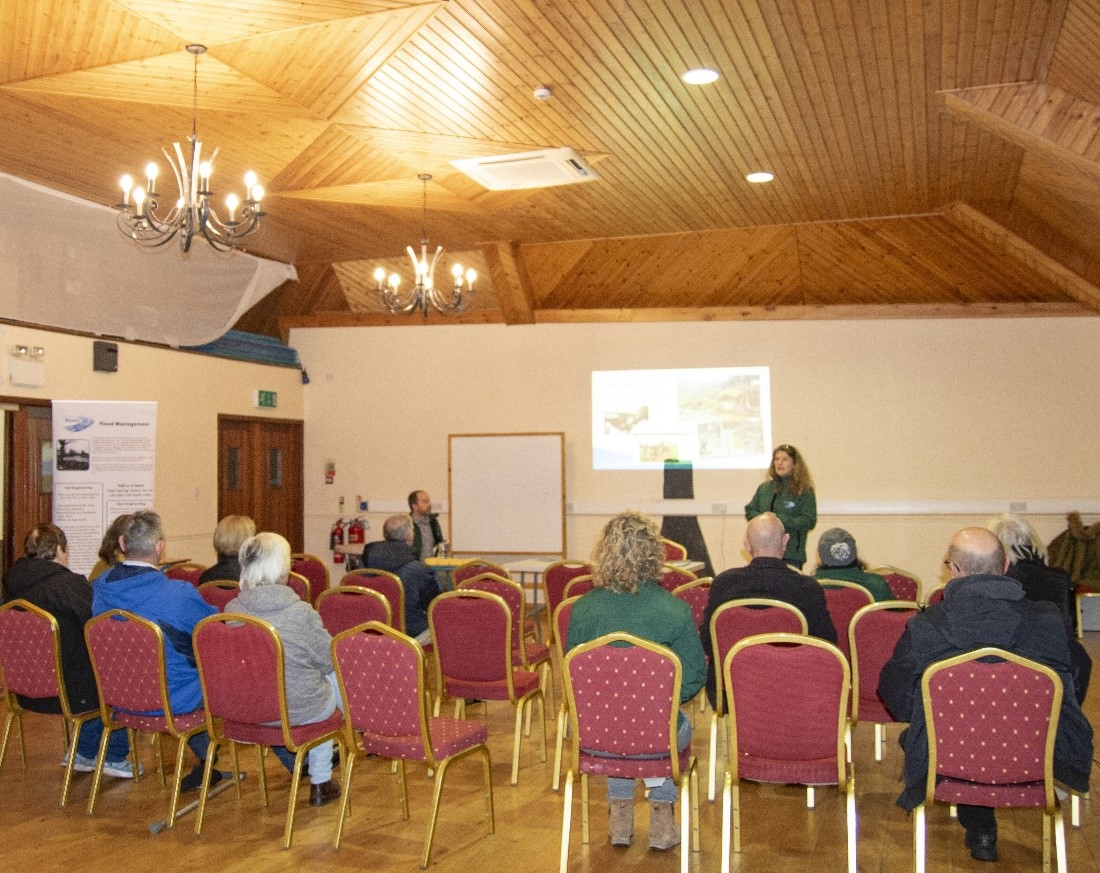
Flooding on a farm near Clonmany PHOTO: LIZ DOHERTY
The Rivers Trust is putting out a call to all local landowners and farmers to support an important peat restoration project in Inishowen that will help prevent local flooding and support biodiversity.
The call is going out ahead of World Wetlands Day, celebrated on February 2 every year. The Rivers Trust Ireland Development Manager Constanze O’Toole said: “We are in the initial stages of establishing the Buffer+ scheme, a pioneering project funded by the EU that invites local landowners, farmers, and the community to play a pivotal role in reviving our wetlands.
“On World Wetlands Day, we are putting out a special call to all landowners in the Inishowen area who would like to get involved to contact us for more information and find out how this project can benefit them.”
World Wetlands Day is celebrated to raise global awareness about the vital role of wetlands for the environment and humanity. It marks the date that the Ramsar Convention on Wetlands, an international treaty for wetland conservation and sustainable use was adopted in 1971. The day serves as an opportunity to highlight the critical importance of wetlands, which are crucial for biodiversity, water purification, flood control, and climate change mitigation.

Community members in attendance at a recent Buffer+ information event presented by Sean Toland and Trish Murphy in Clonmany Market House PHOTO: LIZ DOHERTY
Ireland has a unique historical and cultural relationship with our wetlands, from ancient bog body sacrifices to heating our homes for generations. In fact, peatlands once covered a fifth of the country and feature heavily in Ireland’s mythological and economic histories.
However, today 80-90 per cent is considered degraded, about half due to industrial peat extraction and traditional and mechanical turf cutting and the remainder drained for agriculture, forestry, and other land uses.
Buffer+ is a new Interreg NWE-funded project in Donegal that has been launched by The Rivers Trust and Inishowen Rivers Trust to support the restoration of these vital wetland habitats.
Damaged or drained peatlands release greenhouse gas emissions, through oxidation of the buried carbon and peat fires. Raising the water levels in degraded peatlands (known as rewetting) effectively and rapidly reduces emissions and is the first step towards the longer-term project of restoring their function as natural carbon sinks.
Wetlands also provide critical habitat for local biodiversity. While only 10% of Ireland's biodiversity has been assessed we do know that 15% of the original flora of Ireland are peatland plants. 14% (59 species) bird species have been recorded on peatland. 49% of all endangered birds in Ireland occur on peatlands, most as breeding species.
The Rivers Trust is a leading environmental charity working in Ireland, Northern Ireland, and Britain, focused on protecting, preserving, and restoring rivers and wetland environments such as peat bogs. The charity is now using its experience and expertise to coordinate Buffer+, an ambitious EU-funded project in Donegal. The Donegal pilot scheme is run by local community members who are a part of the Inishowen Rivers Trust (IRT).
Buffer+ has individual partner projects across five NW European countries (Ireland, France, Belgium, Germany and The Netherlands) which all aim to restore the capacity of peat bogs to buffer water and carbon. Buffer+ partners focus on practical and economically viable climate change adaptations and mitigation methods, while at the same time working to restore biodiversity and create new revenue streams.
Buffer+ in Donegal will provide flood alleviation solutions via drain blocking and increased water retention in local peatlands to reduce the overall flood risk to the village of Clonmany which has been severely affected by flooding in the past. BeeOdiversity will also be working on the project to select sites for bee hives in the area, which will be used to assess the biodiversity of the locality and the impact of restored wetlands.
Constanze concluded: “By participating in wetland restoration, landowners and the community can actively contribute to preserving and enhancing biodiversity in Donegal and beyond. We encourage local landowners to learn more about the Buffer+ scheme and if they can play their part in restoring our natural heritage. With this collective effort, we can transform degraded lands into thriving ecosystems, offering economic, environmental, and community benefits.”
Landowners interested in the benefits of getting involved with Buffer+ can contact us below for more information.
“This initiative not only aims to restore crucial wetland ecosystems but will also explore how restoring peatlands can be economically beneficial to landowners and their local community.”
Subscribe or register today to discover more from DonegalLive.ie
Buy the e-paper of the Donegal Democrat, Donegal People's Press, Donegal Post and Inish Times here for instant access to Donegal's premier news titles.
Keep up with the latest news from Donegal with our daily newsletter featuring the most important stories of the day delivered to your inbox every evening at 5pm.